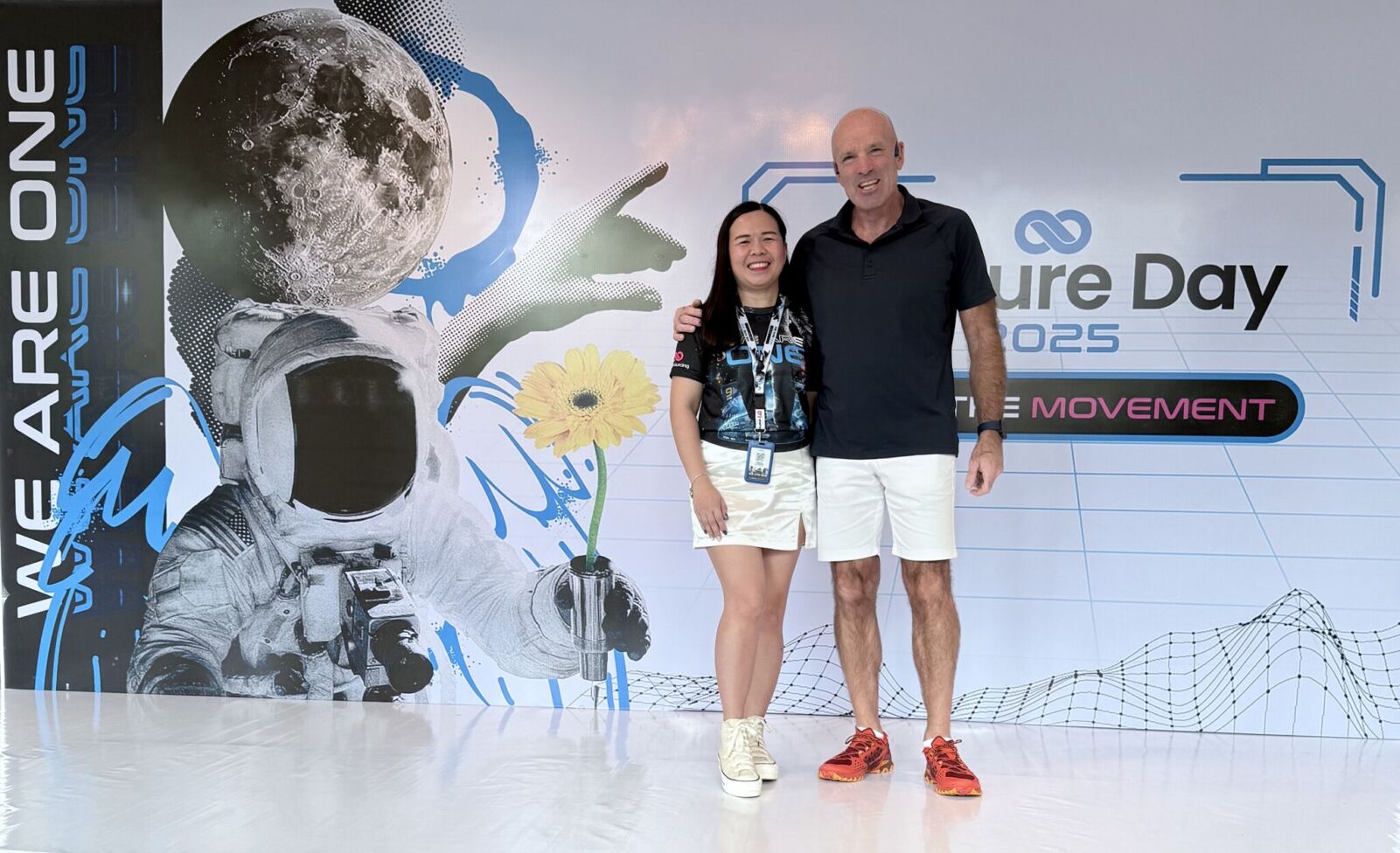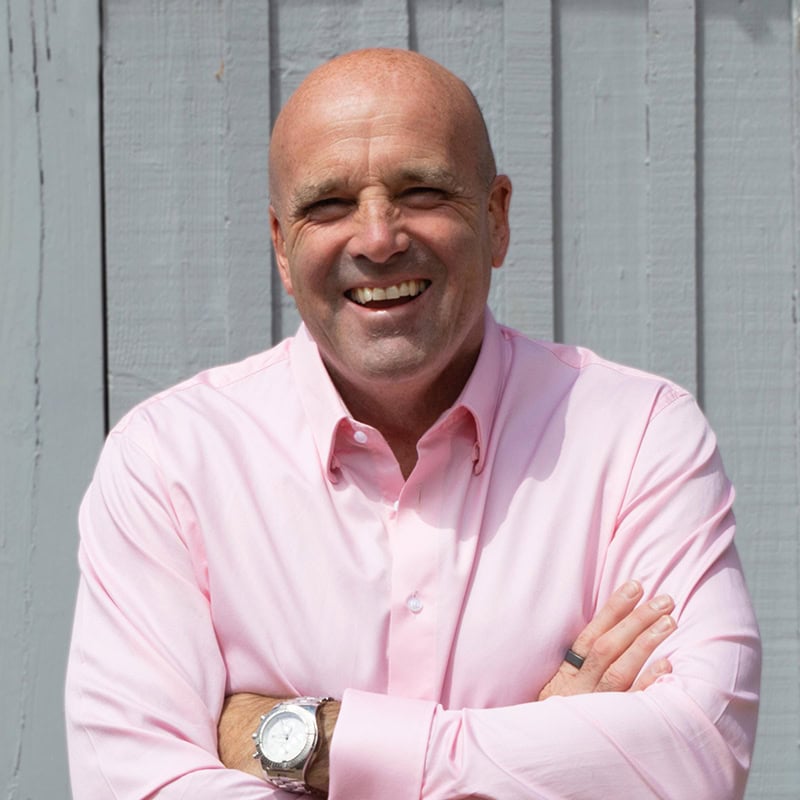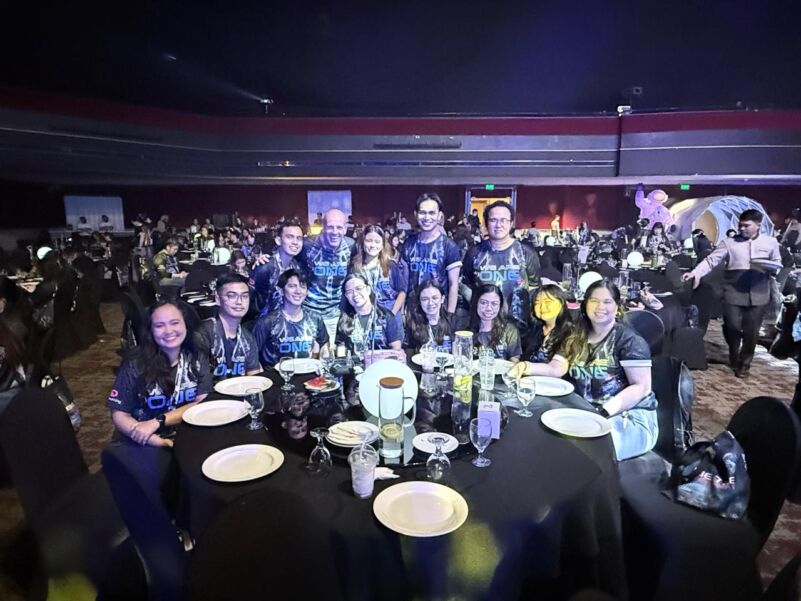Quick Summary
Takeaways
-
Scaling fast demands constant evolution at the top — yesterday’s team won’t always win tomorrow.
-
Culture is proven by who shows up when they don’t have to.
-
Bottlenecks don’t vanish; they move — your job is to keep finding the next one.
-
Clarity beats cleverness every time — great growth dies in ambiguity, not incompetenc
Stepping out into Cebu is like opening an oven door you forgot was on: hot, humid, happily chaotic. The narrow streets are a permanent traffic jam, luridly-coloured jeepneys nosing past food stalls, horns stitching the air together. It’s noisy, it’s alive, and it smells of two-stroke and grilled pork.
However, I’m not here as a tourist. I’m here because one of my clients, Smartsourcing, is mid-stride in a scaling-up journey that’s been four and a half years in the making. When we started together they had a workforce of around 200. Now they’re around 770 and still accelerating. My job this week: keep them scaling without losing the plot – upgrade leaders, lift constraints, wire habits – so good decisions keep showing up on Tuesdays when nobody’s watching.
The week unfurls fast. Culture Day on a Saturday (unpaid, optional, heaving). A full day with eighty-five team leaders. An exec retro I’ve been itching to run – quarter by quarter, loved and loathed, wins and wounds. Between sessions I’m catching up with the people who make this whole thing move: Noemi in partner experience, Kim in technology, Mathan in information management, and Carlos corralling change through project mobilisation.
If that sounds breathless, welcome to Cebu. This trip is one part celebration – joining the company-wide Culture Day – and two parts discipline: iterate the leadership team, raise the bottleneck, keeping the foot firmly on the accelerator.
Who we’re working with and why it matters
Smartsourcing. Cebu, Philippines. CEO Mike Selfe. We’ve been in the trenches together four-and-a-half years, and they’re exactly the kind of client that makes you book the flight: they do the bloody work. When we first met, the place had great bones and a scary growth curve – one of those “strap in or step aside” moments. We agreed early that scaling would mean constant iteration at the top, naming and lifting whatever constraint was throttling progress, and hard-wiring rhythms that force reality into the room every week.
Inside, Smartsourcing is a different planet. You’ve seen those gloomy photos of international offices that European companies outsource to – grey cubes, grey faces, battery-hen energy. This is the opposite: light, colour, a bloody slide, a barista station, free food, and – crucially – happy people. It’s “Western-quality” fit-out without the soullessness: teams buzzing, whiteboards alive, meeting rooms that don’t feel like dentist surgeries. It’s the kind of environment that anyone would enjoy working in – and it’s very clear that everyone there does.
Leadership team v4: same values, upgraded horsepower
At this stage of growth, a leadership team can’t be a museum exhibit. The crew that got you to 200 isn’t automatically the crew that takes you to 770, and Smartsourcing embraced that truth. Roles sharpened; overlaps vanished; decisions started moving like a ball pinging through midfield. The talent bar went up and stayed there – every critical seat either an A-player or on a clear path to becoming one.
People moved, too. Mike shifted from heroic doer to builder of builders. Noemi climbed from EA to director of customer experience, now steering CX from Melbourne while doing an MBA. Kim grew with the company, taking the reins as director of IT and turning squeaky systems into something you trust at scale. Mathan came in to unspool the data/tech spaghetti and now runs dev and internal systems. A co-founder stepped off the top table into an individual-contributor role spearheading AI – ego parked, impact up. And Carlos – a much-loved and valued former Monkhouse & Company employee – built project mobilisation, a front door for change where every project starts with an impact statement and a commitment to weekly reports.
The constraint that blinked: hiring 50 in a single month
When we started, hiring was one of their choke points. Their record was forty in a month; the business needed more, faster, without lowering the bar. We treated it like an engineering problem. Map the funnel, pull out the gravel, move ownership to the line so decisions happen where the work lives. Make the place somewhere people are proud to drag their mates into. It didn’t change in a sprint; it changed in seasons. And then one month the scoreboard read 50 hires and nothing else fell over. That’s what it looks like when you take a bottleneck personally: you don’t “solve” it; you lift it – and then you go looking for the next one.
Culture that shows up when it doesn’t have to
Some CEOs moan they can’t get people into the office for two days a week. Smartsourcing ran Culture Day on a Saturday, unpaid and optional. Only 15 out of 770 didn’t show.
Let that marinate.
Culture isn’t a poster in a corridor; it’s attendance. It’s what people do when nobody’s making them. If you’re reading this thinking “mine wouldn’t come”, don’t roll your eyes – ask a better question: what would have to be true for them to want to?
85 team leaders, one day, zero faff
We built the day around two muscles most managers undertrain: saying the hard thing on time, and keeping A-players brilliant without letting them turn into prima donnas. I set the room up by pretending I’d drag someone on stage to finish my talk. You could feel the terror. Perfect. I used that moment to teach box breathing – four in, four hold, four out, four hold – so the amygdala shuts up and the frontal lobe comes back online. You can’t deal with difficult situations when your prehistoric genetics have you firmly in fight or flight mode – so we master our instincts with our intelligence instead.
From there we got practical. Not pep talks – phrases. The sort that unstick a conversation. Even the counter-intuitive opener, “I need to have a conversation with you, and it’s going to be difficult for me,” which weirdly takes heat out of the room. We rehearsed until the awkwardness wore off.
Then we talked stars. A-players are rocket fuel when stretched and seen; they’re ticking time bombs when not held to the same standards as everyone else. The job is to give scope and visibility without giving them a hall pass on values.
Role play turned theory into scar tissue. Triads rotated through a scenario: an employee asks for a pay rise, the manager creates a path with new responsibilities, the skills don’t materialise, and now the employee wants the money anyway. Then we turned up the friction – bereavement, family illness, accusations of bias. Some pairs held their nerve: breathe, acknowledge, stick to facts, design next steps. Others tried to solve life instead of the job and watched the wheels wobble. We paused, dissected, reset, ran it again. By late afternoon, you could feel confidence settling in the room.
The year on one whiteboard: retro, truths, one word
With the execs we ran the tape back, quarter by quarter – using a simple Loved/Loathed/Went well/Didn’t/Wished/Learned frame. Patterns emerged fast: hiring velocity up, onboarding feeling the strain, a couple of cross-team seams rubbing sore, processes still running on heroics rather than design.
Then we confronted the truths. No flannel, no “yeah, but.” The stuff everyone half knows and nobody wants to say out loud finally got air. We didn’t leave it there; each truth turned into work – what we’ll stop, what we’ll start, what we’ll keep – names next to actions, first steps in the diary.
To finish, everyone chose a single word to steer their quarter and anchor their OKRs. “Finish” to kill the almost-done. “Quality” to raise the bar at speed. “Simplify” to cut clever clutter. “Accountability,” “Bold,” “Focus,” even “Fun” to stop the seriousness curdling into misery. We wrote them big and wired them into the weekly cadence so they do more than glare from a flipchart.
What other CEOs should nick
If you’re scaling, assume your top team needs to evolve and make peace with that before the evidence slaps you. Go after the constraint like a dog with a bone; when it moves, don’t throw a party – go find the next one. Give change a process so the loudest voice stops winning: impact first, charter next, weekly visibility always. Stop “training” difficult conversations and start rehearsing them until your managers can do them with a pulse at 110. And if you want discretionary effort on a Wednesday, build a culture people would give a Saturday to – because culture isn’t a poster, it’s who turns up when nobody’s making them.
A word on pride
It’s easy to write clever blogs about growth. It’s harder to sit in hot rooms with nervous managers and teach them how to look a colleague in the eye and say something true. Harder – but better. Because when they get it, the business moves. Careers move. Families move.

Here’s what I’ve learned watching companies scale: growth doesn’t break organisations – ambiguity does. The moment roles blur, accountabilities overlap, or decisions lose an owner, momentum dies. The best leaders I work with treat organisational clarity like oxygen: non-negotiable, constantly monitored, and the first thing to check when something feels off. They know that a brilliant strategy executed through a confused structure loses to a decent strategy executed through crystal-clear ownership every single time. And they understand that culture isn’t what you say in front of the rest of the company – it’s what your worst manager gets away with on a Wednesday afternoon when nobody’s watching.
I didn’t fly to the Philippines to clap politely, or to avail myself of fabulous cocktails (though of course, I did do both of those things). I flew to help. To coach, to cajole, to say, “No, not that – this.” To celebrate loudly when the needle moves and swear gently when we make the same daft mistake twice. And to grin like an idiot when 50 hires becomes a memory, not a miracle.
To Mike, Noemi, Kim, Mathan, Carlos, and everyone who showed up on a Saturday: you’re why I do this. You’ve built something that does justice to the word ‘team’. Now let’s see what’s next.
Written by business coach and leadership coaching expert Dominic Monkhouse. You can order your free copy of his book, Mind Your F**king Business here.

